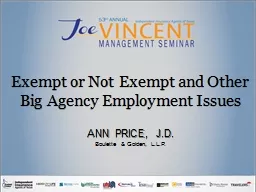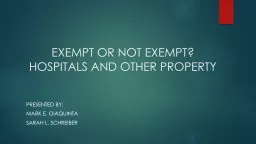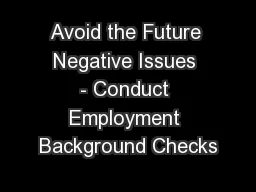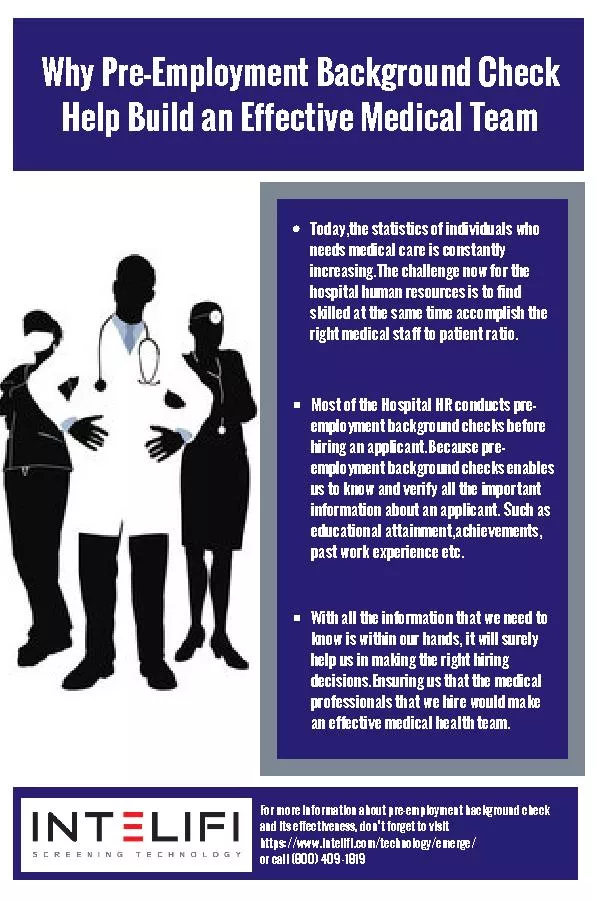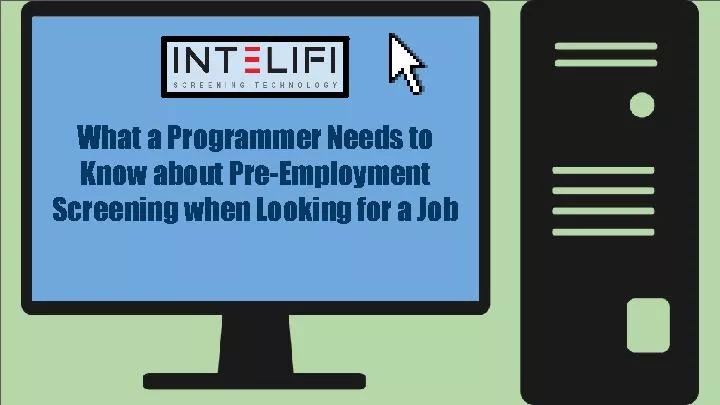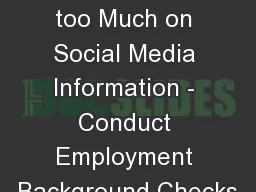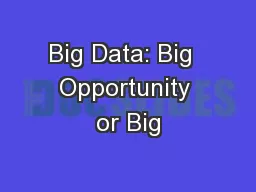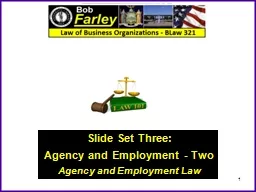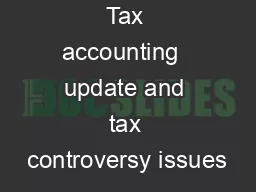PPT-Exempt or Not Exempt and Other Big Agency Employment Issues
Author : mitsue-stanley | Published Date : 2019-06-26
ANN PRICE JD Boulette amp Golden LLP Fair Labor Standards Act of 1938 Exemptions and anticipated changes Employee or independent contractor status Regulatory
Presentation Embed Code
Download Presentation
Download Presentation The PPT/PDF document "Exempt or Not Exempt and Other Big Agenc..." is the property of its rightful owner. Permission is granted to download and print the materials on this website for personal, non-commercial use only, and to display it on your personal computer provided you do not modify the materials and that you retain all copyright notices contained in the materials. By downloading content from our website, you accept the terms of this agreement.
Exempt or Not Exempt and Other Big Agency Employment Issues: Transcript
Download Rules Of Document
"Exempt or Not Exempt and Other Big Agency Employment Issues"The content belongs to its owner. You may download and print it for personal use, without modification, and keep all copyright notices. By downloading, you agree to these terms.
Related Documents

